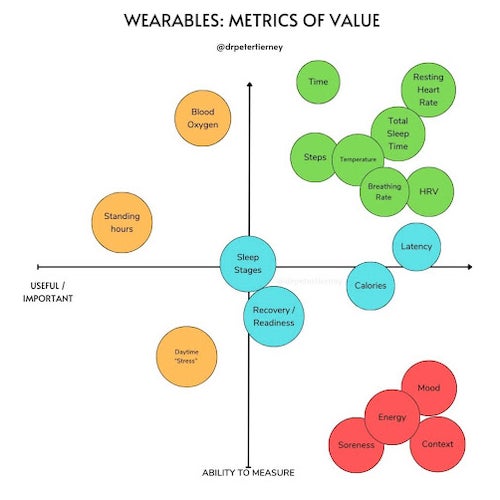
He recommends focusing on the metrics labeled in green (below), underscoring that these are important and useful metrics to track, and that wearable tech does a suitable job of measuring them accurately. He lists these as time (i.e. tracking duration of exercise), resting heart rate, steps, temperature, total sleep time, breathing rate, and overnight heart rate variability.
Moving through his chart, he identifies the metrics labeled in blue as somewhat important and useful metrics, but that wearable tech has limits in accurately collecting and processing. These include: sleep stages, recovery and readiness scores, calories, and latency (the “lag” in how quickly the device captures a metric such as heart rate).
The metrics labeled in orange are data sets that Dr. Tierney feels are pushed by wearable tech companies, but may not be completely useful to measure and have the potential to cause more anxiety than practical use. These include: daytime “stress,” standing hours, and blood oxygen (though in rare and specific instances, blood oxygen measuring can identify undiagnosed conditions such as sleep apnea).
Lastly, Dr. Tierney explains that the metrics labeled in red are an extremely important piece to the health puzzle, but wearable tech cannot measure them. Thus, these metrics are what athletes should utilize to help guide their decision-making process, often trumping isolated metrics provided by a wearable. He lists these as: energy, mood, soreness, and context.
These are all presented as equally important and validated by the tool, but they are not.
Josh BeckmanComment via email
